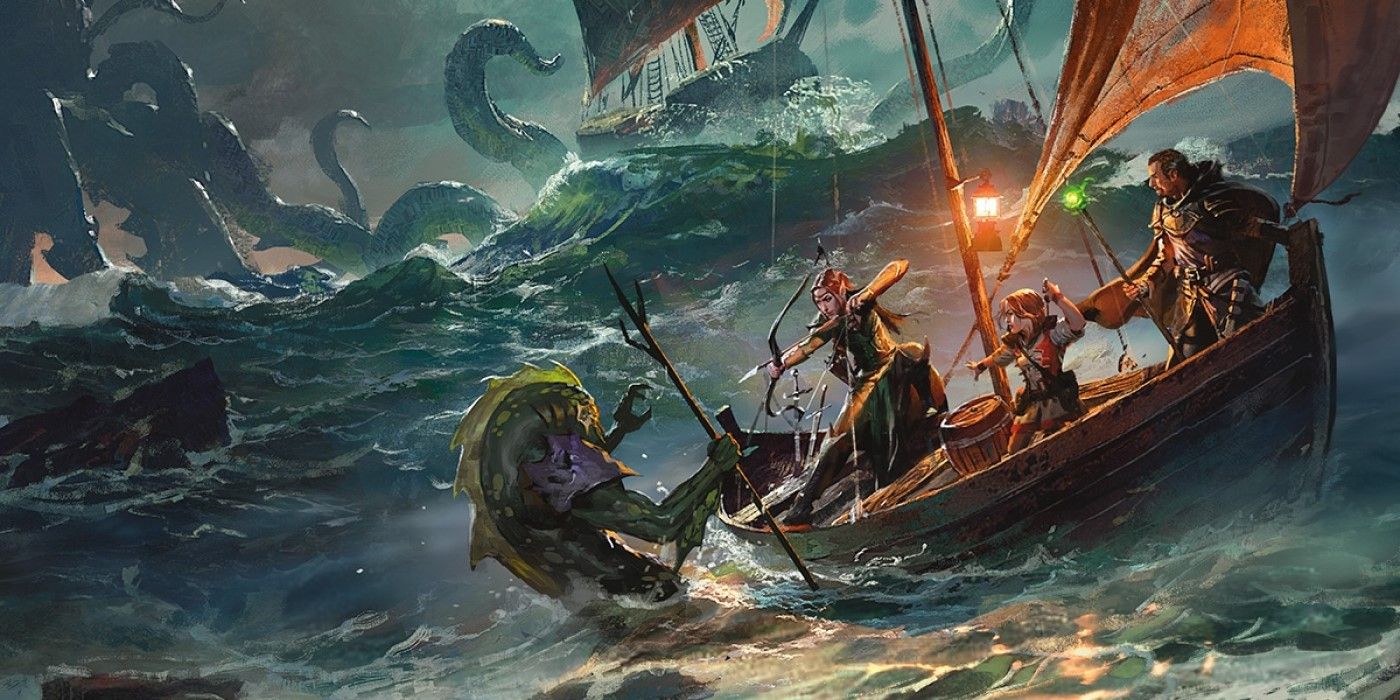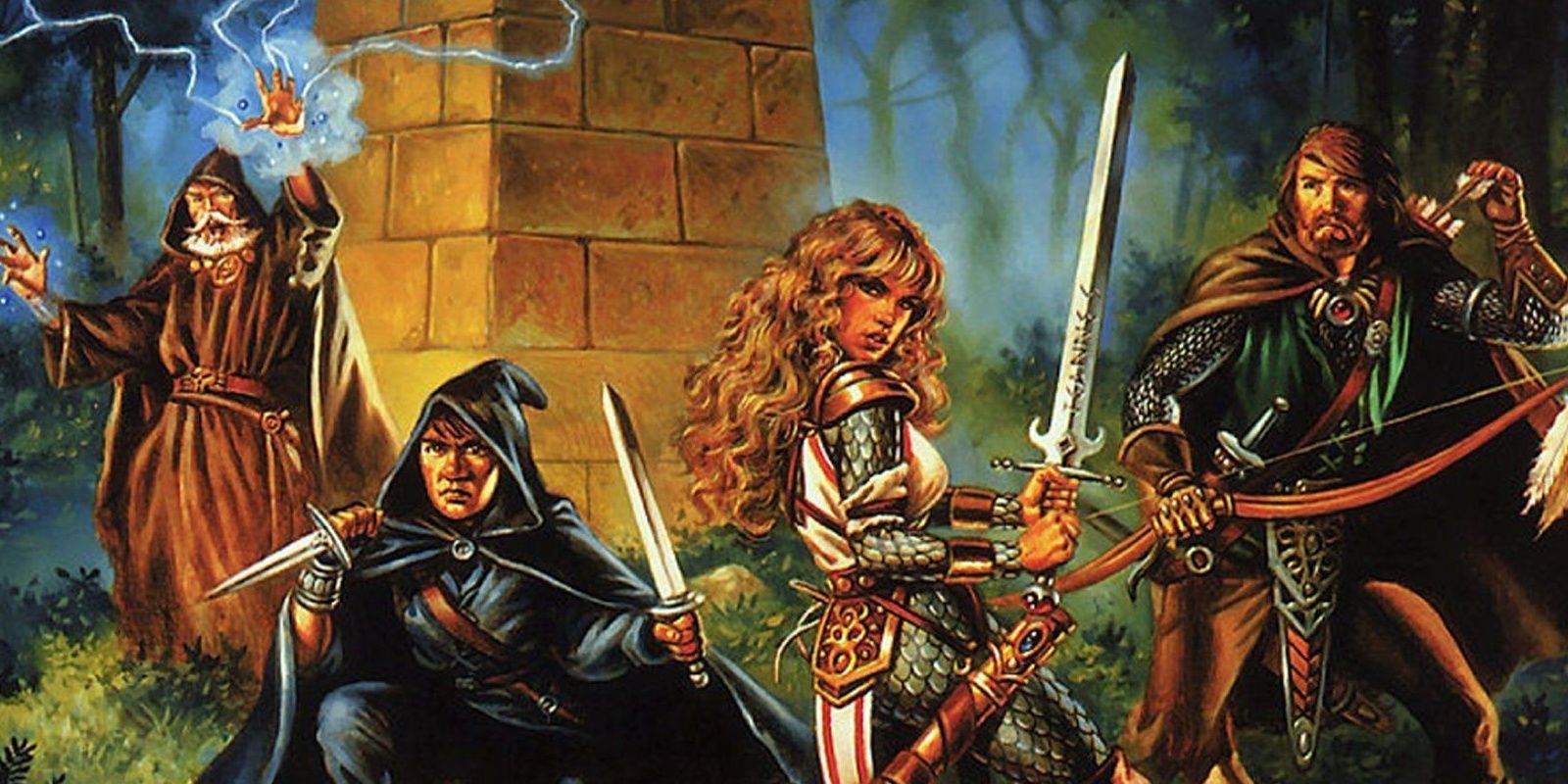Dungeons and Dragons may have experienced a bit of a lull in the era of fourth edition, but recent years have been very kind to the game. The current edition of 'the world's most greatest roleplaying game' is wildly popular partially thanks to the success of liveplay streams like The Dungeon Run, Critical Role, and other celebrity-filled DnD tables. The launch of DnD Beyond three years ago also helped make organizing campaign's and character sheets much more easy in a digital format and the tool has become an essential part of character creation for many players. One interesting side effect to that shift is a whole lot of interesting data that DnD Beyond is able to access and share.
In addition to which spells are being cast the most, which armor is most often equipped, and which creatures are most frequently used in the Encounter Builder; the DnD Beyond team is able to pull some interesting numbers relating to average Dungeons and Dragons party composition. By reviewing campaign data throughout DnD Beyond, the team is able to offer a look at things like the average size of a party, which classes get the most love, and even down to the granular level of which subclasses are becoming the most popular.
For the data-crunchers out there, this is some fascinating stuff to explore. Although the popularity of a class or subclass doesn't necessarily equate to its value or power-level, this does help reveal which archetypes the community as a whole are leaning into and which ones are getting left behind. If any gamers out there are about to start a new campaign and want some inspiration for popular party composition or which subclass might be the most fun, it's possible that take a look at these lists might help them make a decision.
The new data is based on an analysis of 30 million different characters currently built in DnD Beyond. Keep in mind that this is snapshot of the current state of DnD Beyond characters, so it's not like it's an average based on comparing three different years worth of data. For the current list, we're looking at the here and now. Also keep in mind that most of these lists are based data for single-class characters and multiclass toons are excluded for the sake of the lists making sense...
Most Popular Subclasses by Class (All players, single class characters)
Barbarian 8%
Path of the Berserker (49%)
Path of the Totem Warrior (19%)
Path of the Zealot (8%)
Figher 13%
Champion (40%)
Battle Master (17%)
Eldrich Knight (11%)
Rogue 11%
Thief (39%)
Assassin (15%)
Arcane Trickster (14%)
Bard 7%
College of Lore (59%)
College of Glamour (10%)
College of Whispers (8%)
Monk 7%
Way of the Open Hand (45%)
Way of the Shadow (11%)
Way of the Drunker Master (9%)
Sorcerer 7%
Draconic Bloodline (59%)
Wild Magic (12%)
Divine Soul (8%)
Cleric 8%
Life Domain (52%)
Tempest Domain (7%)
War Domain (6%)
Paladin 7%
Oath of Devotion (44%)
Oath of Vengeance (16%)
Oath of the Ancients (10%)
Warlock 9%
The Fiend (52%)
The Hexblade (16%)
The Great Old One (9%)
Druid 6%
Circle of the Moon (25%)
Circle of the Land (Forest) (18%)
Circle of Shepherd (7%)
Ranger 7%
Hunter (58%)
Beast Master (13%)
Gloom Stalker (11%)
Wizard 8%
School of Evocation (40%)
School of Necromancy (10%)
School of Divination (8%)
Artificer 1%
Artillerist (36%)
Alchemist (28%)
Battle Smith (25%)
There's a lot of interesting data to decipher there. Although it's always been true, some players may be surprised to see that Fighter is the most popular class by a decent margin. Fighters have been a staple of D&D since the earliest days and they are a popular choice about purists, but also have an appeal to new players as a simple class to start out with.
Although they do begin with few feature choices (just the fighter style) and the first few levels are pretty basic in terms of combat mechanics, the class really opens up at level 3 when subclasses unlock and players can decide on a specialization. Although Champion is clearly the most popular, Fighters have a handful of other choices to select from, including the Critical Role-inspired Echo Knight.
Most Popular Party Compositions
Party of Three
Cleric, Fighter, Ranger
Barbarian, Cleric, Rogue
Cleric, Paladin, Rogue
Figher, Rogue, Warlock
Druid, Fighter, Rogue
Party of Four
Cleric, Fighter, Rogue, Sorcerer
Cleric, Fighter, Rogue, Wizard
Barbarian, Druid, Rogue, Sorcerer
Barbarian, Cleric, Rogue, Wizard
Barbarian, Cleric, Druid, Rogue
Part composition is also interesting to take a closer look at. In the top five selection for these single-class parties clearly Clerics, Fighters, Rogues, and Barbarians are dominating a lot of the space. It's a bit surprising that Wizards, Sorcerers, and Druids are lagging a bit behind in the numbers. Again, this doesn't indicate quality of any class, or even power level, and is more just about player choice and how frequently these different groups come together.
DnD Beyond has typically released this sort of snapshot data about once a year, so we'll likely see an update again during the summer of 2021. It will be interesting to see how the popularity of different classes and subclasses continues to shift as additional books are released and more options become available. Although we still don't know what is coming after Icewind Dale: Rime of the Frostmaiden, many players are hoping for another sourcebook similar to Xanathar's Guide to Everything that would act as a second optional Player's Handbook sequel/expansion full of new subclasses and player options. There are currently some very interesting subclasses in playtesting on DnD Beyond, so perhaps some of those are getting closer to launch.
There are going to be a lot of other details about Icewind Dale and other upcoming D&D products dropping throughout the rest of the summer and early fall, so be sure to stay tuned and check back for additional news. Be sure to check back in the near future for more Dungeons and Dragons news, updates, and strategy guides. Until then, roll well, adventurers!
Dungeons and Dragons: Icewind Dale Rime of the Frostmaiden releases everywhere on September 15, 2020. Existing Dungeons and Dragons products are available now at game stores or digitally through DnD Beyond.


